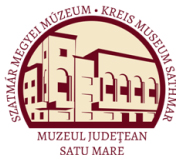Marta, Liviu: The Late Bronze Age Settlements of Petea-Csengersima (Satu Mare, 2009)
VI. Annexes
dish KA 1 Ac 1 S9 Complex 6 (Fig. 3, 5). — A pit was partially excavated and had an oval outline. It was delimited by the cultural layer (100 m). The walls of the pit were irregular, varying from steeply inclined to sloping for 30—36 cm in height, and went steep for 90 cm. Inventory: 29 pottery fragments that originated from 14 vessels, 5 pieces of daub (one has prints of three parallel piles). Most of the pottery fragments originated from the body of 2-3 pots. There were also 2 bowl rims (one had lobbed rim), also a fired fragment with excised decoration, a fragment from the shoulder of an amphora with wide and horizontal fluting and vertical ribs. A pottery fragment with excised decoration might have been rolled; the amphora fragment was specific of the horizon Lăpuş II— Gáva I. Pottery shape Paste Decoration type Pottery type No. of elements Plate s IC,IA 1 amphora s GA,BC 1 dish s IBa 1 pot f 2 1 S9 Complex 7 (Fig. 3, 5) — A red pot in situ was found in the cultural layer and had its upper part 20 cm above the sterile soil (PI. 11/16). There was a clay weight in the vessel and a few small fragments of bones, and another clay weight laid next to it (PI. 11/14, 15). Not assigned to an archaeological culture. S9 Complex 8 (Fig. 3, 5) - A pit with circular outline (83 cm in diameter) in which one third of an amphora was buried. The upper part of the amphora came out from the cultural layer, and cut into the sterile clay. The shape of the pit was conical as it took the shape of the inferior part of the vessel, as the amphora was in standing position on the base of the pit. The 84 pottery shards made up one third of the vessel. Date/culture: Lăpuş II—Gáva I. Pottery shape PasteDecoration type Pottery type No. of elements Plate amphora c FA 3A 1 _ Sector S10 (35,40 x 3 m; 106, 2 m2, Fig. 3). S10 Complex 1 (Fig. 3, 6) — A pit had circular oudine (153 cm), it was shallow (10 cm) with the outline hardly visible. It had flat base, dark-brown fill with inclusions of daub fragments and scattered charcoal. Inventory: 20 pottery shards (2 were fired) and 10 pieces of daub. Pottery fragments originated from at least 3 vessels made of coarse paste. Not assigned to an archaeological culture. Pottery shape Paste Decoration type Pottery type No. of elements Plate amphoras 1? pot s 1 _ S10 Complex 2 (Fig. 3, 6) - A pit, or likely two crosscut pits were found at the base of the cultural layer, in 90 cm depth. One of the pits was large and deep (the maximum depth was 75 cm from the outline) with quasi-rounded outline (165 xl90 cm). It had convex base and steep walls or, it had a step in the north-western side. The other pit was narrow, with round outline (102 cm in diameter), it was less deep than the previous pit (22 cm in depth); it had straight walls and a flat base. Both pits had dark grey fill, almost black, with scattered daub fragments. The small pit contained a larger amount of daub than the large pit. Inventory: 186 pottery fragments (a few of them were fired), a fragment of a river stone, 2 pieces of daub. The pottery shards originated from 31 vessels, the majority of them belonged to the body of some large sized and middle sized vessels. Of the pottery fragments with excised decorations, 3 had decorative motifs specific of the Lăpuş group (PI. 12/4), but 3 shards originated from the Suciu de Suciu cups (PI. 12/2,3). It is likely that they laid in a secondary position because a miniature of an amphora, a bowl with thickened inside lip and a low cup decorated with fluting belonged to the Lăpuş II— Gáva I horizon. 1 13
